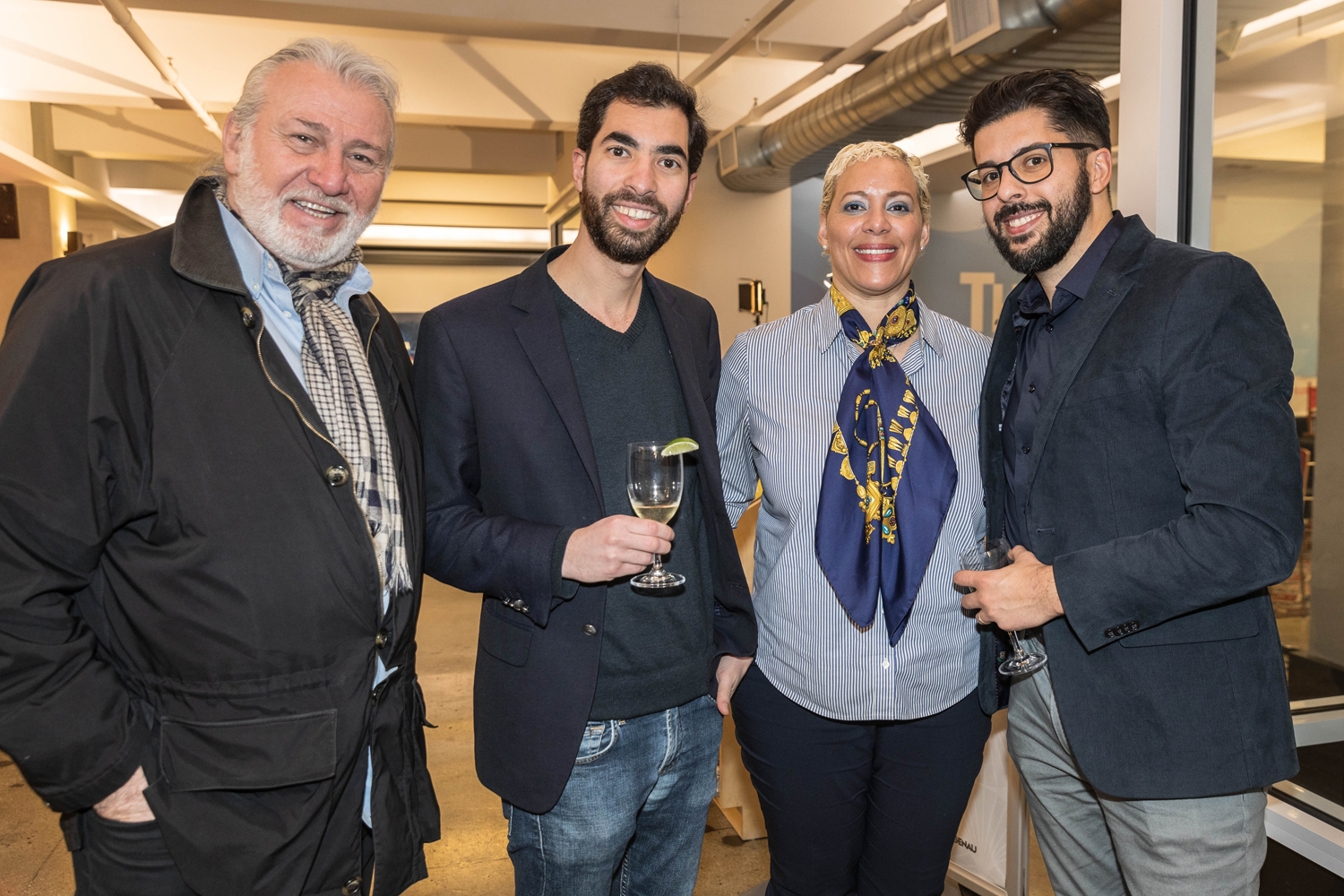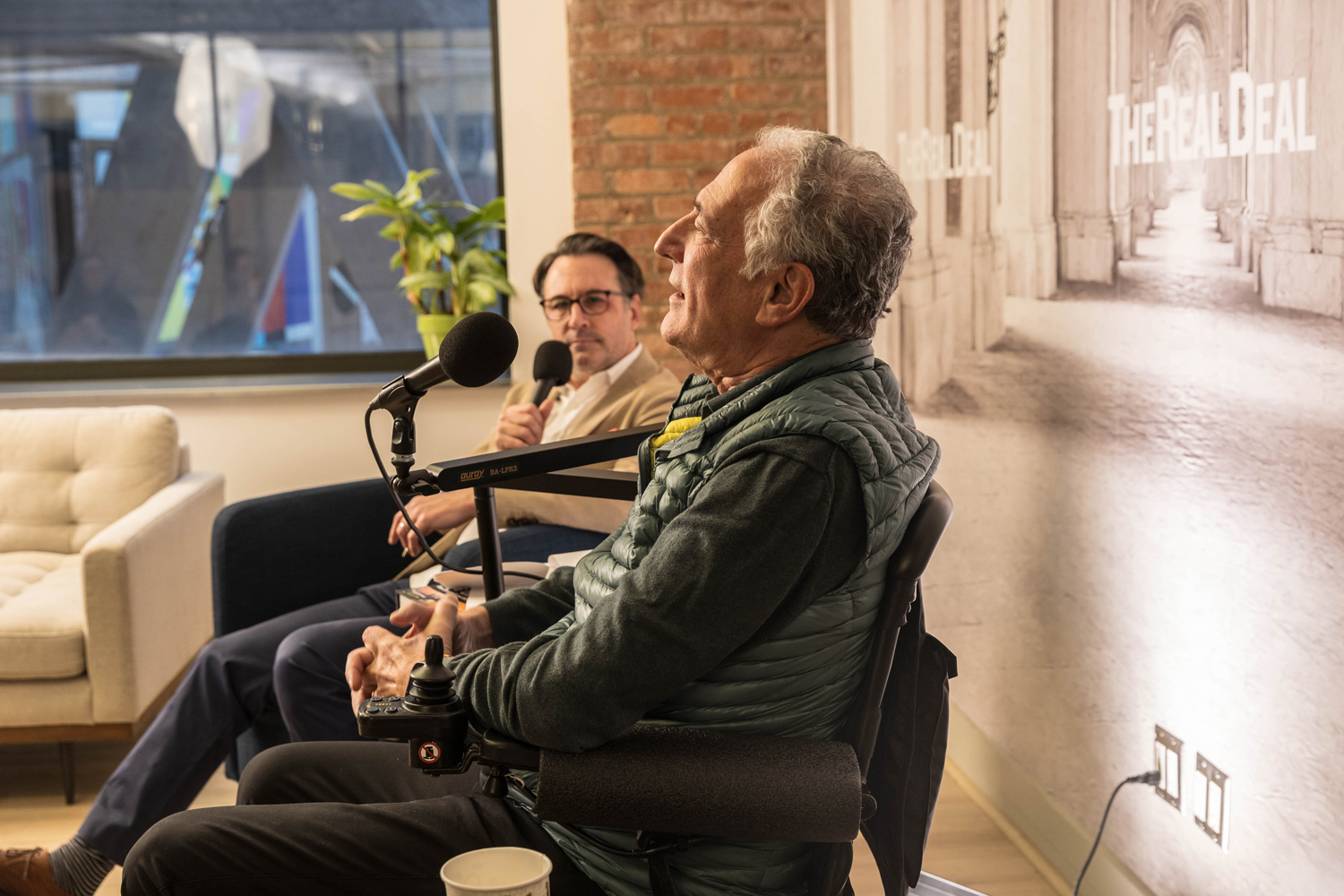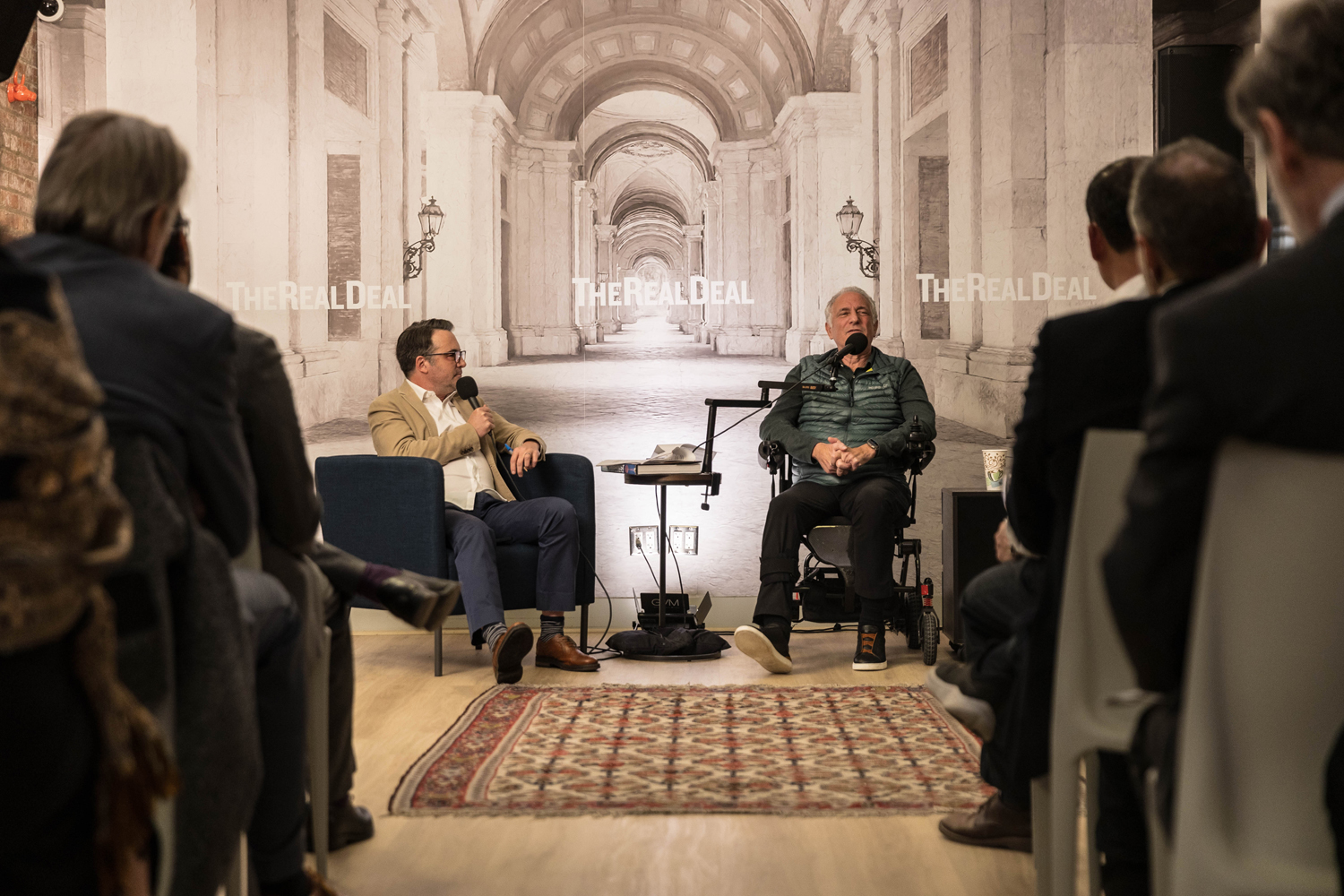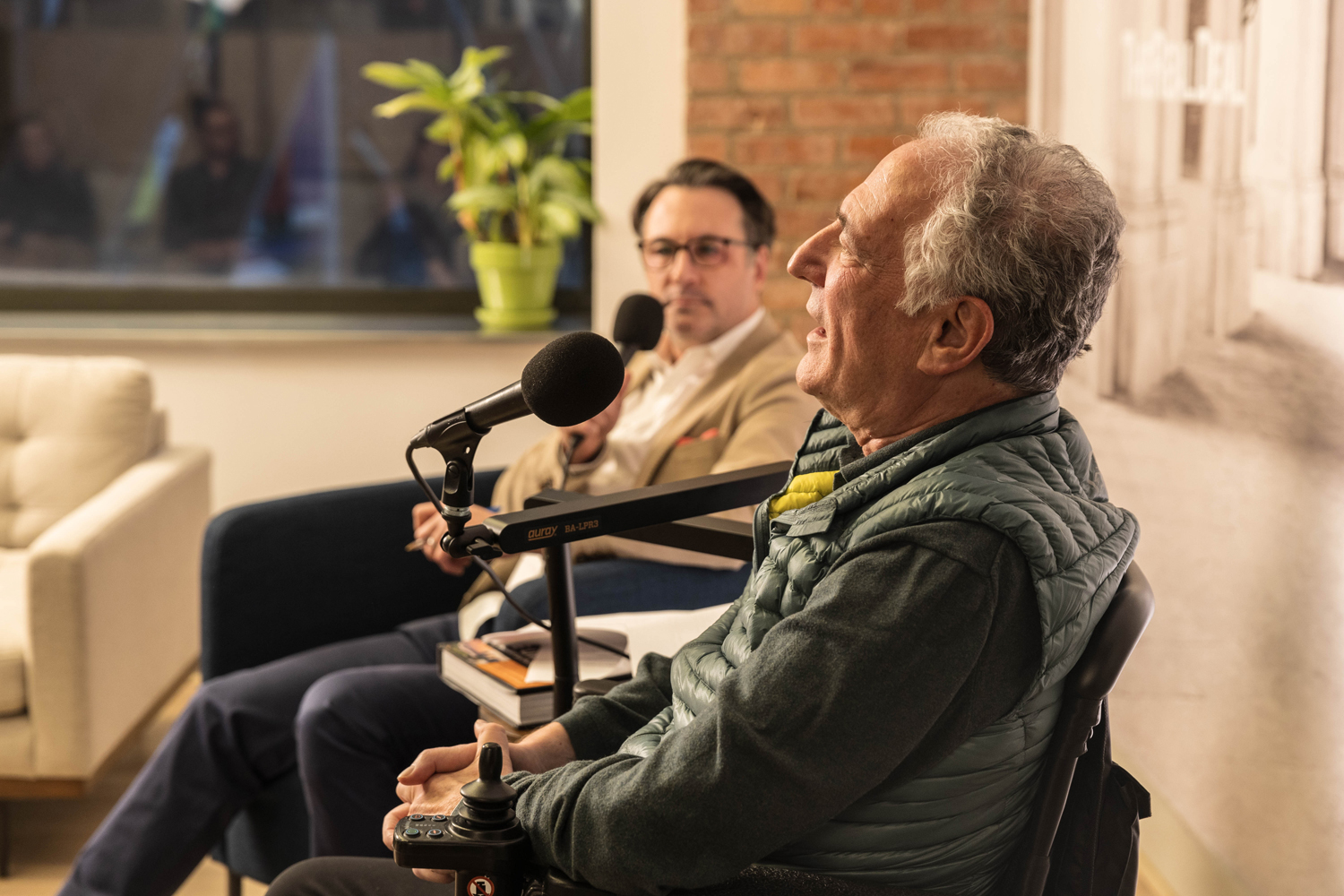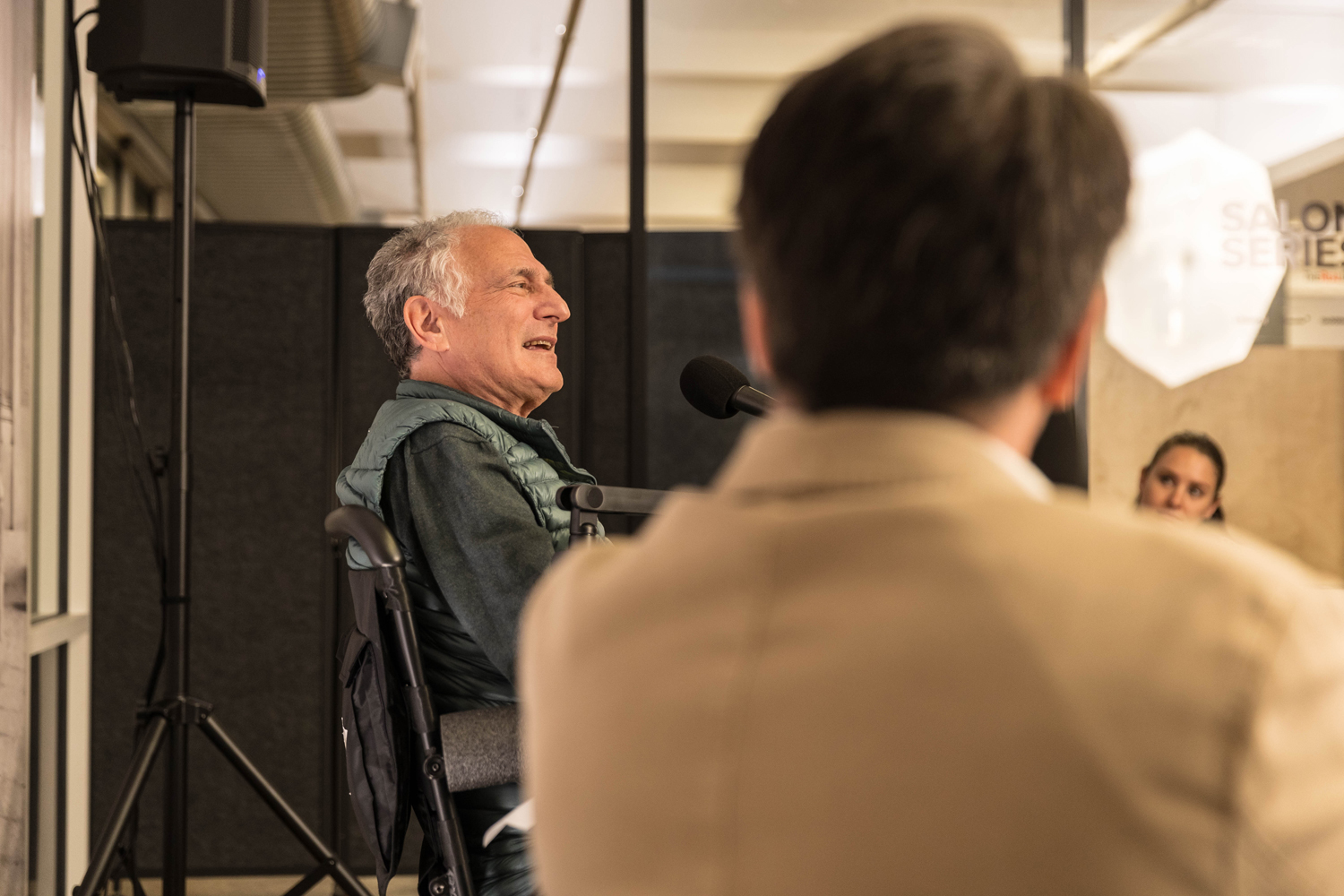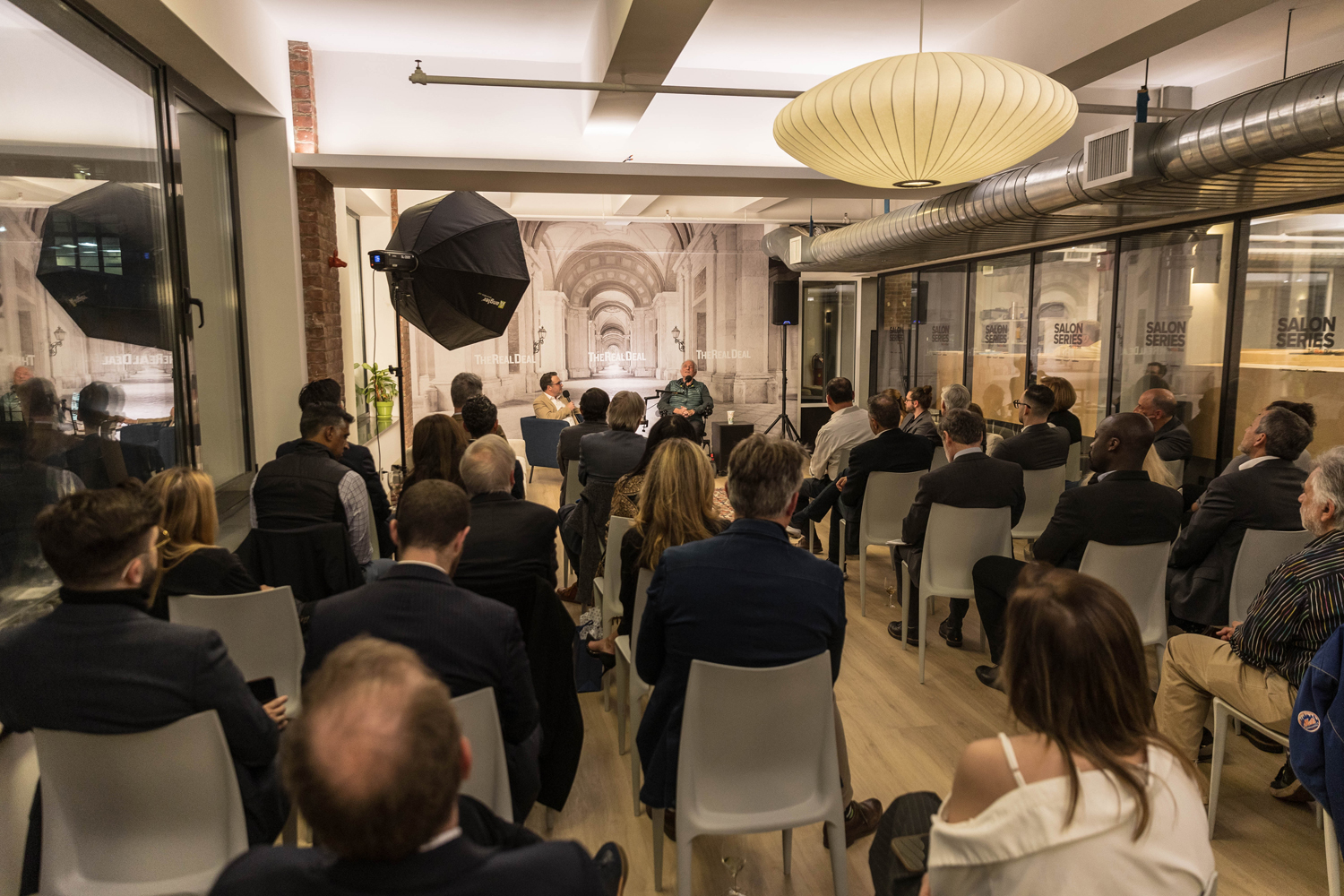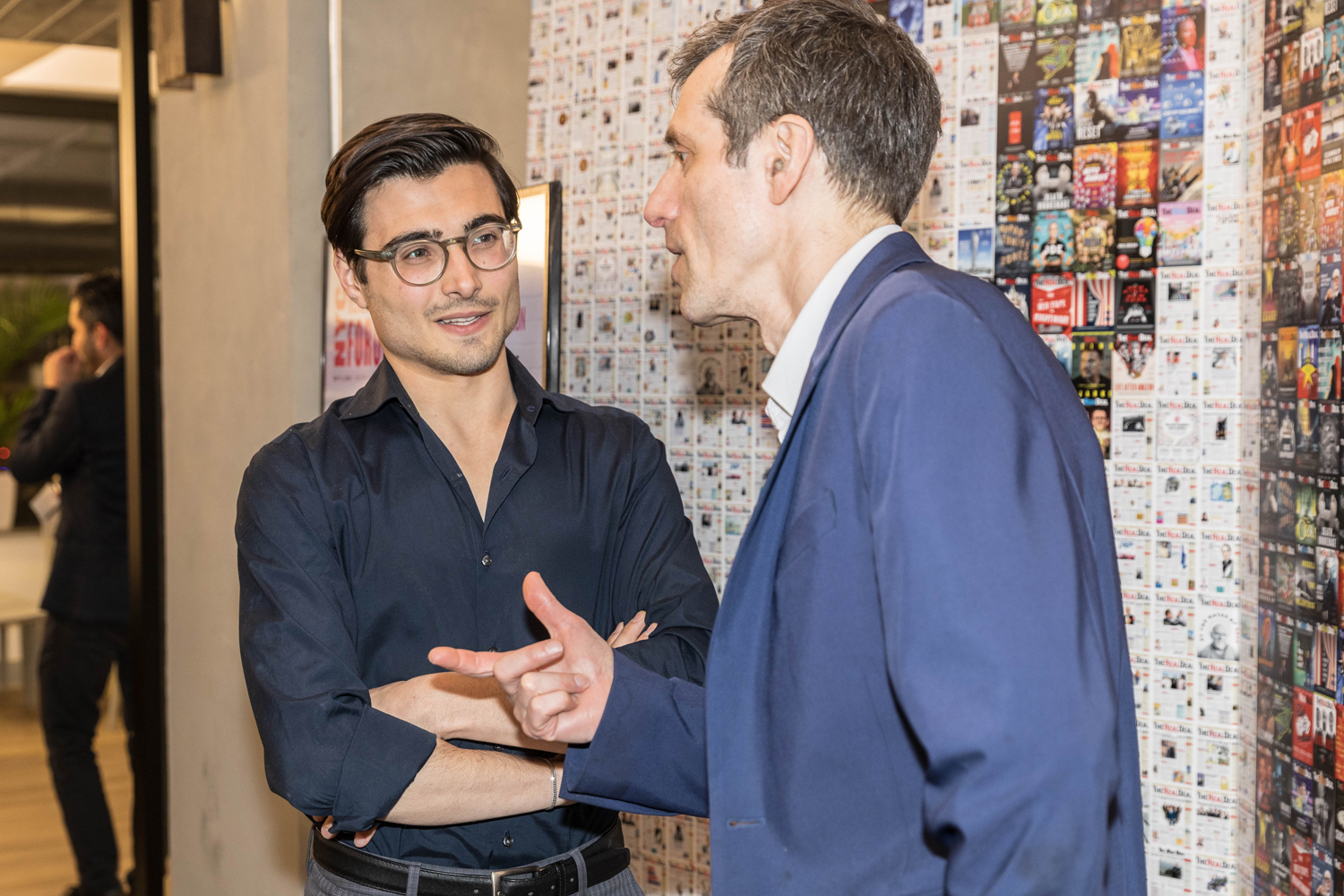Not since Robert Moses has an unelected city official had as much say over real estate development in New York City as Dan Doctoroff.
Despite being diagnosed with ALS in 2021, the 65 year-old, former deputy mayor to Michael Bloomberg jovially spread a prosperity gospel from his wheelchair on Thursday at The Real Deal’s Salon Series, where influential members of the real estate community weigh in on current events and reflect on their work.
Since his diagnosis, Doctoroff has raised $250 million for ALS research, showing the same vigor and optimism that he brought to city government in the 2000s.
“When you grow, you generate a lot more money,” Doctoroff said of his philosophy of cities, “and when you generate more money, you can reinvest in quality of life, every aspect of quality of life, and that cycle just keeps perpetuating.”
Beginning in 2001, when Doctoroff became deputy mayor for economic development despite scant experience, he kicked off two-plus decades of redevelopment activity, starting with Lower Manhattan following the 9/11 attacks.
“I think we had something like 289 projects and about 280 of them got done, which is kind of remarkable,” he said. “We really did everything we could to reduce bureaucratic inertia, and that is the key to getting things done.”
One of Doctoroff’s originalities is his mathematical “law” about the difficulty of government work:
“My law is ‘x + 4y + 10z + infinity’, where ‘x’ is the number of city agencies, ‘y’ is the number of state agencies, ‘z’ is the number of federal agencies, and infinity…is when the Port Authority is involved.”
Doctoroff had one dream which he never realized: bringing the Olympics to New York City. However, the plan he submitted for the official bid proved to be a lasting, literal map of development opportunities in the city.
Hudson Yards and the High Line in Manhattan, the Greenpoint-Williamsburg waterfront and the Barclays Center in Brooklyn, and Hunter’s Point South in Long Island City all had their start in Doctoroff’s Olympic bid.
The largest of those that remains unfinished is Hudson Yards, where a second and final phase of development may include a casino, a possibility that Doctoroff now favors.
“Related [Companies] and Wynn [Resorts] have a $12 billion plan to complete the Western Rail Yards,” he said. “You can say what you want about gambling, everyone has different opinions, but we need to catalyze major development. I think that would be a major catalyst.”
Doctoroff lamented the rejection of an Amazon headquarters in Queens, and described the potential development of Sunnyside Yard as “a huge jackpot.”
“But you have to win over the community,” he added. “Be tough, but everything’s possible. You just need to communicate.”
Other projects Doctoroff would like to see done include a rezoning of the Red Hook neighborhood in Brooklyn, as well as a gondola system to connect it to Governors Island and Lower Manhattan.
“We had a plan to get people to Manhattan in seven minutes,” he said. After leaving government, Doctoroff ran Bloomberg LP and directed Sidewalk Labs in Toronto, where he sought novel improvements for large cities.
On Thursday, he praised Gov. Kathy Hochul and Mayor Eric Adams for being willing to work together (an impossibility for their predecessors), as well as Adams’ deputy mayor for housing and economic development, Maria Torres-Springer; head of the city’s Economic Development Corporation, Andrew Kimball; and its chief climate officer, Rit Aggarwala.
Doctoroff, however, lamented what he said he sees as a lack of big ideas to carry the city forward. A new book, The Urbanist, chronicles the outsize impact of Doctoroff’s government tenure.
Read more


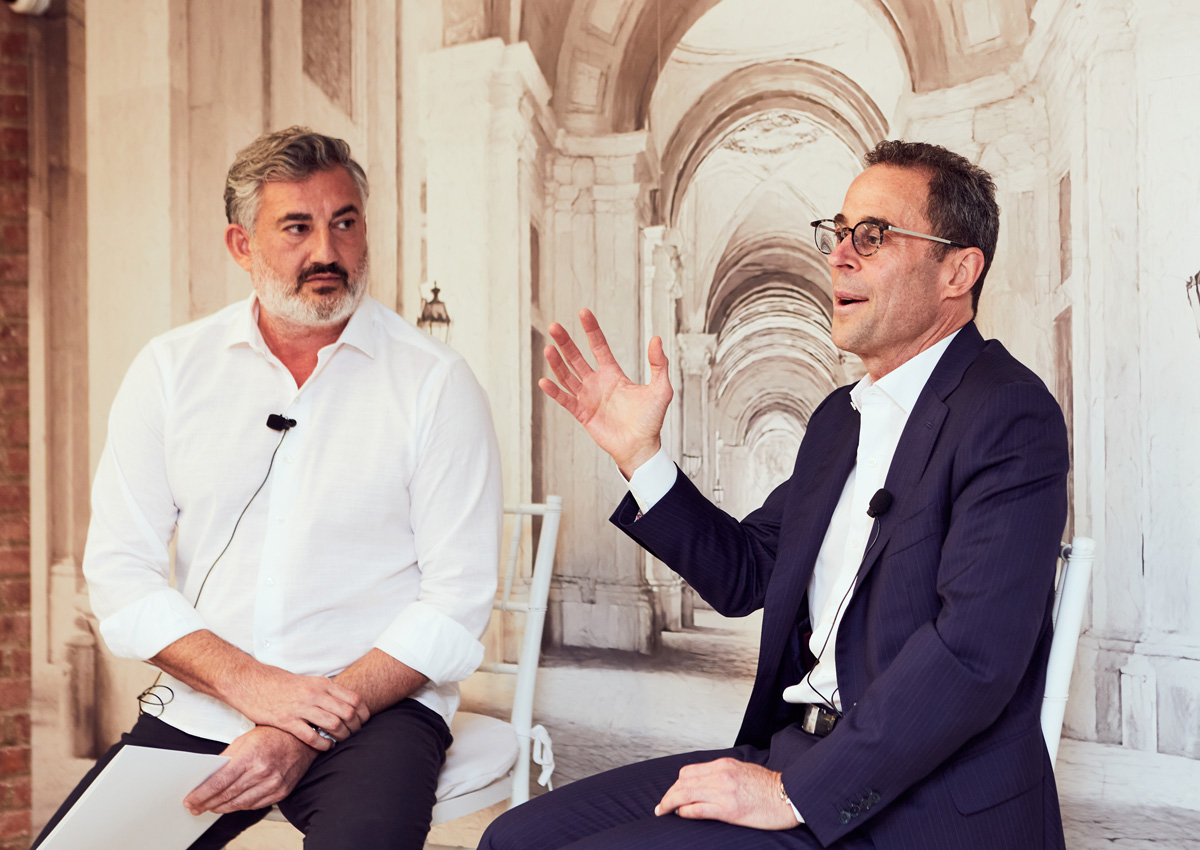
“We need 500,000 units of housing, and we’ve got to have a plan to get there,” said Doctoroff amid the expiry of the city’s biggest financial incentive for developers to create new housing, the 421a tax abatement.
“So we have lost 500,000 people over the last four years…that is not a good omen for the future.” He added: “We lost 800,000 people in the 1970s, and it took us 25 years to get them back.”
Doctoroff said that while office-to-residential conversions are one important solution to the housing crisis, the current pace is too piecemeal; the process, he said, is unnecessarily restricted by a cap on the size of residential buildings.
Demolishing old, out-of-use offices may be a more effective, systematic approach, but would require a new economic incentive.
“Upzoning and getting rid of the FAR restriction, which is now 12 — and by the way, in Hudson Yards we permitted sizes of 15 and 18 — may create the economics to bring some of those [office] buildings down.”
Fundraising for ALS research has given Doctoroff motivation while he confronts the same illness that ended the life of his father and uncle. (Doctoroff told The Real Deal that the possibility of getting ALS had created a specter in his life that came and went through the years.) For someone who once obsessed about the future of New York, Doctoroff has found ALS to be a catalyst for altering his own way of thinking.
“When I was diagnosed, something flipped in me, and I don’t really think about the future, and that was a major change for me,” he said.
“I’ve been incredibly happy since the diagnosis,” he said. “I have purpose.”
